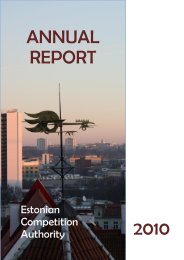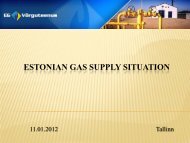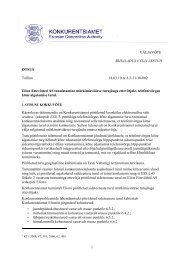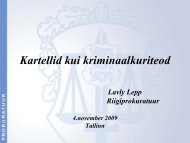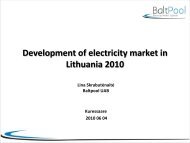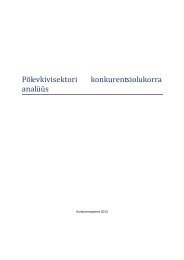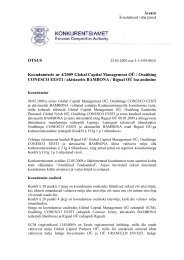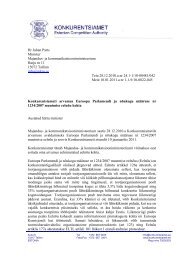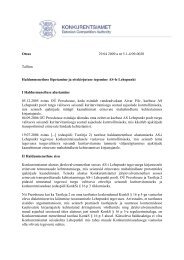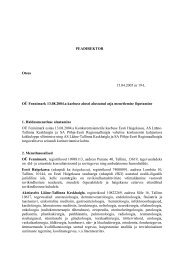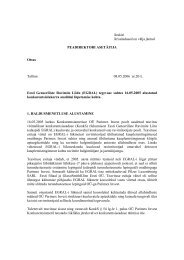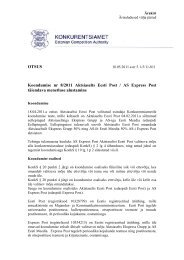annual report 2011 - Konkurentsiamet
annual report 2011 - Konkurentsiamet
annual report 2011 - Konkurentsiamet
You also want an ePaper? Increase the reach of your titles
YUMPU automatically turns print PDFs into web optimized ePapers that Google loves.
CONTROL OF CONCENTRATIONS<br />
The control of concentration is designed to assess its effects of the competition law and to<br />
prevent the creation or strengthening of a market dominant position which may impede effective<br />
competition in the market.<br />
In <strong>2011</strong>, 21 notices of concentration were submitted to the Competition Authority and one case<br />
was brought over from 2010. Thus the Authority proceeded with 22 cases and made 17 decisions<br />
to grant permission to concentration, one decision to prohibit concentration and in one case the<br />
proceeding was ended because the parties to the concentration decided not to concentrate. In<br />
three cases the decision was postponed to 2012. In two cases a decision was made to initiate<br />
supplementary proceedings.<br />
16 out of 17 decisions to grant permission to concentration were made in the first phase of the<br />
proceedings, i.e. during the 30 calendar days prescribed by law. One decision to grant permission<br />
and one decision to prohibit concentration were made in the second phase of the proceedings i.e.<br />
during the five months prescribed by law. Thereby the running of the term was suspended in<br />
four cases in connection with the elimination of deficiencies in the notice. The actual average<br />
length of proceedings of the first phase was 21 days and the length of the supplementary<br />
proceedings was 130 days.<br />
The breakdown by types of concentration was as follows:<br />
An undertaking acquired control of the whole or a part of another undertaking in the case<br />
of 16 concentrations (§ 19 (1) p 2);<br />
Undertakings jointly acquired control of the whole or a part of another undertaking in the<br />
case of 5 concentrations (§ 19 (1) p 3);<br />
A natural person already controlling at least one undertaking acquired control of the<br />
whole or a part of another undertaking or parts thereof in 1 case (§ 19 (1) p 4)<br />
Majority of the concentrations (16) took place among Estonian undertakings; in three cases both<br />
of the parties to the concentration were foreign undertakings and also in three cases the parties to<br />
the concentration were both domestic and foreign undertakings.<br />
In conclusion, it may be observed that the intensity of the concentrations between those<br />
Estonian undertakings whose specific impact on Estonian product markets is particularly<br />
important has increased significantly– this accounts for 73% of the total number of notified<br />
concentrations. The proportion of concentration between foreign undertakings has fallen and it<br />
15



